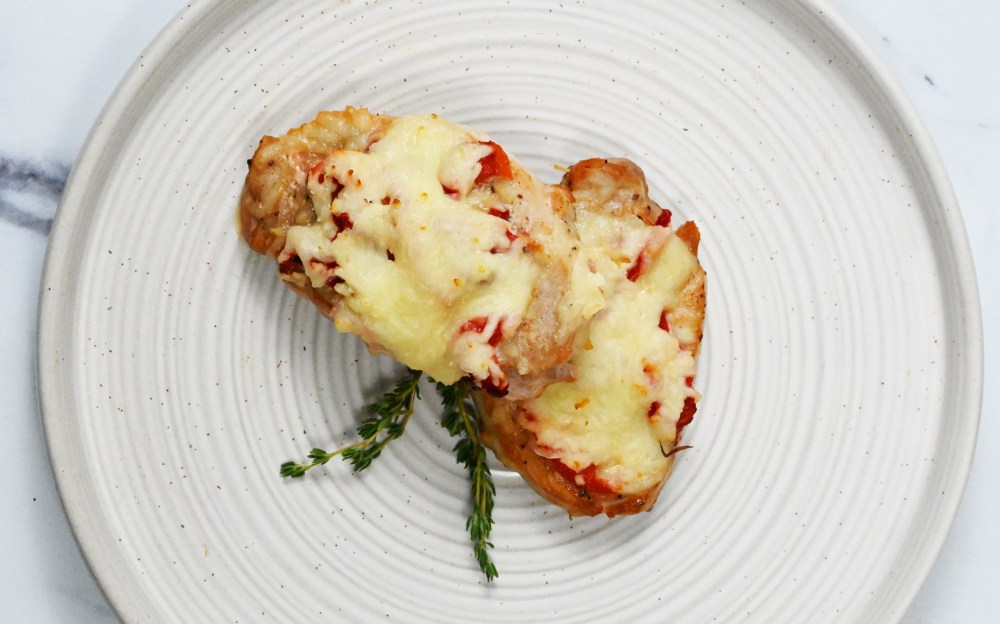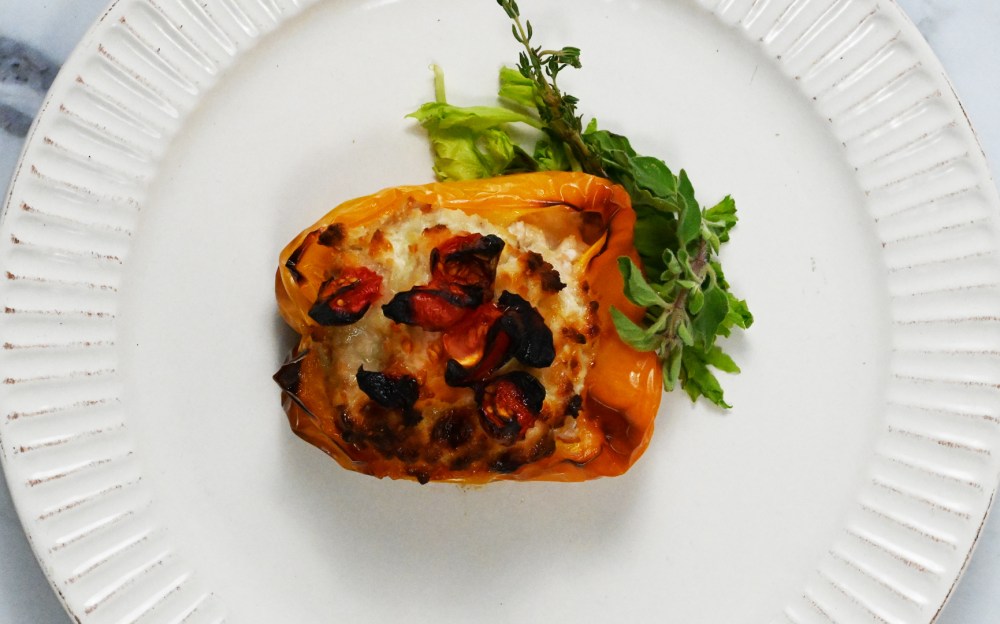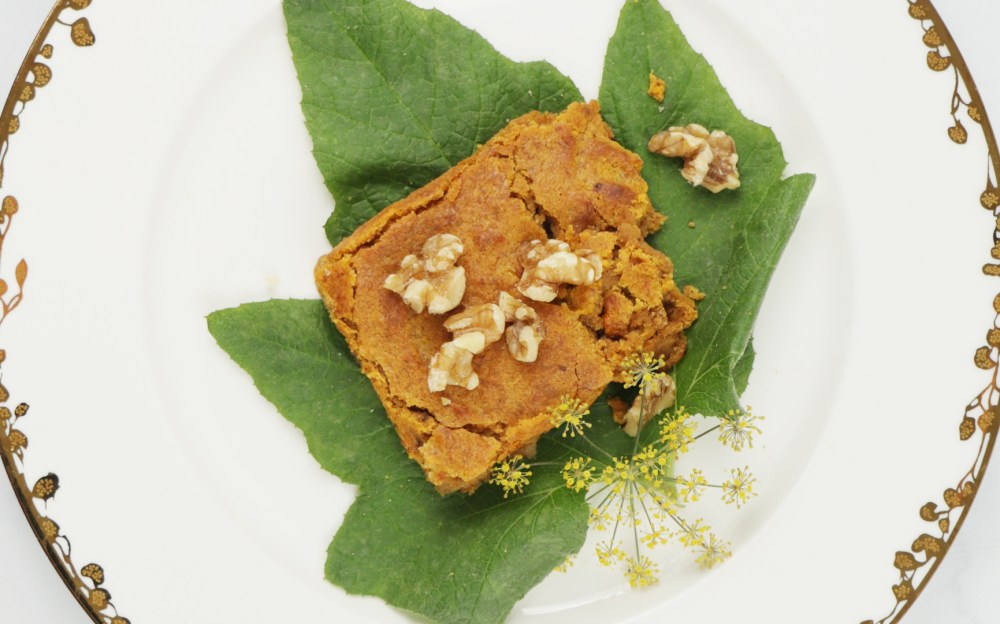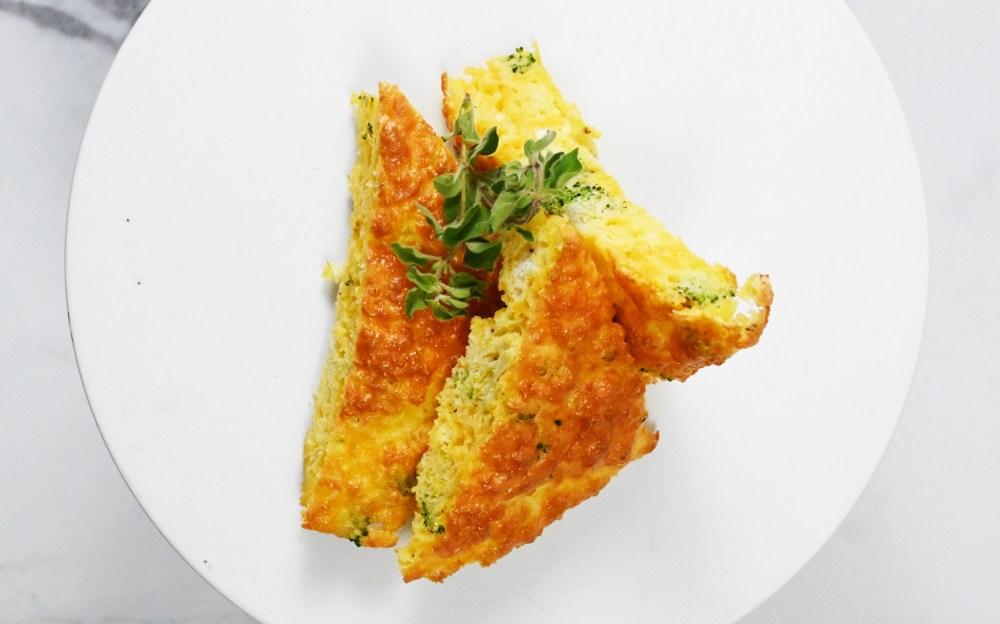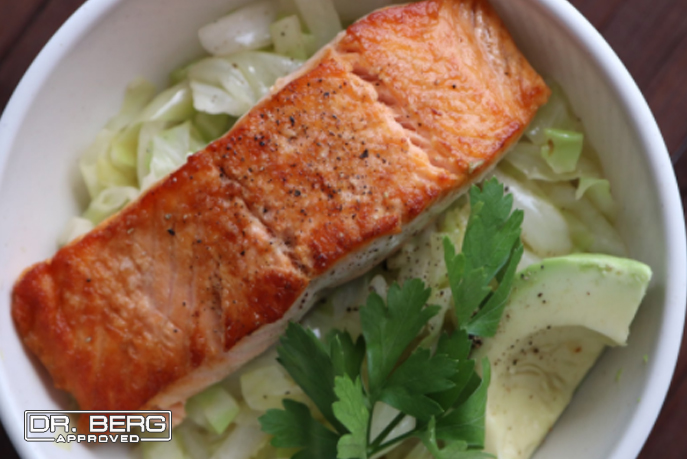Instructions
-
Prepare zoodles by spiralizing 1 zucchini into thin noodles. Set aside.
-
Roll 3 ounces hamburger meat into 4 to 5 evenly-sized meatballs.
-
Heat 1 tablespoon olive oil in a pan over medium-high heat. Add meatballs and cook for 7 to 9 minutes, rotating occasionally to ensure even cooking.
-
While meatballs are cooking, melt 1 tablespoon butter in another pan over medium heat. Add ¼ cup onion and 2 garlic cloves, and cook for five minutes.
-
Add 1 tablespoon tomato paste to onion and garlic mixture, cooking for an additional 2 to 3 minutes on low heat.
-
Once cooked meatballs are ready, add zucchini noodles to pan with meatballs. Stir on low heat for 2 to 3 minutes until zoodles are slightly softened.
-
Transfer to a bowl and garnish generously with fresh 1 cup Parmesan cheese. Season with salt and freshly ground black pepper to taste.

While spaghetti and meatballs is a classic dish that many people love, it’s not keto-approved.
Luckily, with a little creativity and the right ingredients, you can make a delicious low-carb version of this popular comfort food.
This Meatballs and Zoodles recipe pairs juicy grass-fed beef with zucchini noodles, delivering the satisfaction of traditional spaghetti and meatballs without raising your blood sugar levels.
Why you’ll love this keto-friendly recipe
Italian cuisine is often associated with carb-heavy pasta tossed in marinara sauce. Fortunately, the zucchini spaghetti noodles in this recipe prove you can still enjoy your favorite Italian meals on a Healthy Keto® diet.
Moreover, the succulent meatballs made with grass-fed beef are a great source of protein and healthy fats, keeping you energized and in fat-burning mode.
Research published in Food Science of Animal Resources supports this, revealing that grass-fed beef has a healthier fat profile and fewer cholesterol-raising fatty acids than grain-fed beef.
In addition to the nutritional benefits of grass-fed beef, using olive oil adds a dose of heart-healthy monounsaturated fats, which have been linked to a reduced risk of heart disease.
This recipe also calls for grated Parmesan cheese, offering not only a delightful savory flavor but also providing calcium, protein, and healthy fats.
For those who aren’t fans of zucchini noodles, there are plenty of other low-carb noodle options, such as spaghetti squash, shirataki noodles, or thinly sliced eggplant.
Another reason you’ll love this recipe is that these zoodles and meatballs take only 30 minutes, making them the perfect dinner choice for busy nights.
You can also customize this dish by substituting grass-fed beef with organic ground turkey to make keto turkey meatballs with zoodles. However, make sure to add extra olive oil during cooking to prevent meatballs from drying out.

What are zoodles?
Zoodles, or zucchini noodles, are spiralized zucchini that resemble classic pasta noodles.
They serve as an excellent gluten-free and low-carb alternative to traditional wheat-based pasta. Zoodles are a versatile ingredient for various dishes, including salads, and stir-fries, and make an excellent substitute for lasagna noodles.
“Zucchini is high in nutrients, including vitamin C, potassium, and antioxidants,” explains Dr. Berg. “These nutrients are essential for supporting a healthy immune system, maintaining healthy blood pressure levels, and reducing inflammation in the body.”
There are many zucchini noodle recipes that are paired with various sauces, such as pesto, tomato, or Alfredo sauce, to create delicious meals that won’t spike your blood sugar levels.

What to serve with Keto Meatballs and Zoodles
This Zoodles and Meatballs Recipe can be served as a standalone meal or paired with a side salad or roasted vegetables for added fiber and nutrients.
Here are several of what to serve with Keto Meatballs and Zoodles.
Keto Cheesy Garlic Asparagus
To add a savory side dish to your feast, try this Keto Cheesy Garlic Asparagus.
Roasted asparagus is topped with garlic, olive oil, and shredded cheese for a mouthwatering combination that enhances the meaty flavors of the meatballs and zoodles.
Keto Garlic Bread
Perfect for dipping into this delicious tomato sauce, this Keto Garlic Bread is made with almond flour and generously topped with garlic butter and Parmesan cheese.
It’s a simple low-carb bread recipe that can be prepared in advance or cooked alongside the main dish.
Chicken Caesar Vinaigrette Salad
This refreshing Chicken Caesar Vinaigrette Salad perfectly accompanies this hearty Meatballs and Zucchini Spaghetti recipe.
With a flavorful vinaigrette dressing and shredded chicken, this dish is packed with protein and healthy fats that will energize you until your next meal.

Roasted Brussels Sprouts
For a side dish that adds crunch and flavor, try these easy-to-make Roasted Brussels Sprouts.
Seasoned with olive oil, sea salt, and pepper, this dish perfectly balances savory flavors with a crispy texture.
Brussels sprouts are also rich sources of essential vitamins and minerals, such as vitamins C and K and potassium, making them an ideal addition to your weekly meal prep routine.
Keto Feta and Golden Beet Salad
There’s nothing like a refreshing salad to balance rich and hearty dishes such as these Keto Meatballs and Zoodles.
This Keto Feta and Golden Beet Salad is a great option, as it’s packed with zesty flavors and nutrients.
It combines golden beets, arugula, feta cheese, and parsley, offering an extra serving of vegetables that’ll perfectly complement the meatballs and zoodles.

Storing and reheating tips
You can store leftover Keto Meatballs and Zoodles in an airtight container in the refrigerator for up to four days. It’s best to separate the zoodles from the sauce to prevent them from getting soggy.
To reheat, place the desired amount of meatballs in a skillet over medium heat. Then, add a splash of water or beef broth to help them retain moisture and prevent sticking.
Alternatively, you can reheat the meatballs in a preheated oven at 350 degrees F (175 degrees C) for about 10 to 15 minutes or until heated.
It’s not recommended to use a microwave as it can dry out the zoodles and meatballs.
For longer storage, this dish can be frozen for up to three months. Transfer the meatballs into a freezer-safe container or ziplock bag to freeze, removing as much air as possible.
Avoid freezing the zoodles, as they can become mushy when thawed. Instead, make the zoodles fresh when ready to eat and combine them with the reheated meatballs.

Final Thoughts
This delectable Keto Meatballs and Zoodles recipe delivers healthy fats, protein, and essential nutrients, ensuring you feel energized while staying in fat-burning mode.
For a complete meal, pair it with low-carb side dishes, such as Roasted Brussels sprouts, Chicken Caesar Vinaigrette Salad, and Keto Garlic Bread.
FAQ
1. What can you use in meatballs instead of breadcrumbs?
You can use almond flour or crushed pork rinds as a substitute for breadcrumbs to make low-carb meatballs. Ground flaxseeds can also be used for those who are avoiding nuts.
2. Do zoodles taste like pasta?
Zoodles have a similar texture to regular pasta but have a slightly different taste. They have a delicate, slightly sweeter flavor compared to wheat-based pasta’s nutty taste.
3. How do you cook zoodles without making them mushy?
To prevent zoodles from becoming mushy, cook them for a few minutes until they have slightly softened but remain crunchy.
Removing excess moisture from the zucchini before cooking also helps. Simply salt the zoodles, let them sit for 20 to 30 minutes, then rinse and cook.
4. Can you have zucchini on keto?
Yes, zucchini is a great low-carb choice for those following a keto diet. It’s also high in nutrients, including vitamin C, fiber, and potassium, making it a healthy meal addition.
5. How many carbs are in zoodles?
Zoodles typically contain around three grams of carbs per cup, which is significantly lower than traditional wheat-based pasta, which can have as many as 40 grams of carbohydrates per cup.
6. Which has fewer carbs, zucchini or spaghetti squash?
Zucchini has fewer carbs than spaghetti squash as it contains around three grams of carbs per cup compared to 7 to 10 grams in one cup of spaghetti squash.
7. What can you have with meatballs instead of pasta?
You can substitute wheat pasta with spaghetti squash, shirataki noodles, cauliflower rice, zoodles, or vegetable ribbons made from carrots. Alternatively, enjoy them on their own with some roasted vegetables or fresh salad.
8. How does Keto Meatballs and Zoodles compare to traditional pasta dishes?
This recipe features a lower carb count compared to traditional pasta dishes because it excludes wheat pasta and breadcrumbs typically used in meatballs. Zoodles also add fiber and essential nutrients, making them an ideal pasta replacement for those following a low-carb diet.

